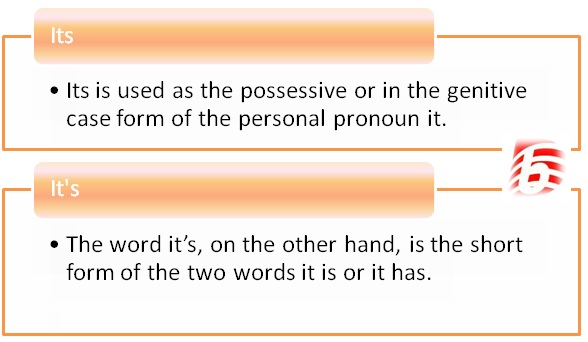Its vs It’s in English Grammar
In the English language, the two forms “its” and “it’s” are often used incorrectly. It is essential for English users to understand the difference between these forms, as their meanings change depending on the context. To use correct English, one must pay attention to this difference. The Oxford English Dictionary defines “its” as a determiner and “it’s” as a contraction of “it is” or “it has.” Let’s examine these two words and the distinctions between them.
What does Its mean?
“Its” serves as the possessive or genitive case form of the personal pronoun “it.” It is the third-person personal pronoun. Observe the following examples:
The lion entered into its den.
The tree emanates fragrance through its flowers.
In both sentences, “its” functions as the possessive case form of the personal pronoun “it.”
Note: Many people mistakenly use “it’s” as the possessive case for the personal pronoun “it.” This confusion arises because other nouns take the apostrophe + s form for the possessive case. However, “its” is the correct possessive case of “it” and serves as an exception to the rule of creating possessive cases.
What does It’s mean?
“It’s” is a contraction of the words “it is” or “it has.” In other words, the words “it” and “is,” as well as “it” and “has,” can be shortened to “it’s,” as demonstrated in the following sentences:
It’s easy to reach the place. (it is)
The teacher says it’s not difficult to by heart the poem. (it is)
It’s been three days since she left. (it has)
In these examples, “it’s” serves as the contracted form of “it is” and “it has.”
The personal pronoun “it” can be used in affirmative sentences, such as “It is raining.” Alternatively, this sentence can be written as “It’s raining,” where the words “it” and “is” are contracted to “it’s.”
The personal pronoun “it” can function as both a subject and an object, as seen in these sentences:
It smells good.
You can see it here.
In the first sentence, “it” serves as a subject, while in the second sentence, the personal pronoun “it” functions as an object. In other words, “it” is used in the accusative case in the second sentence. The use of “it’s” is prevalent in the English language.
Key Takeaways
- Its is used as the possessive or genitive case form of the personal pronoun it.
- It’s is a contraction of the words it is or it has.
- Its and It’s have distinct meanings and should not be used interchangeably.
